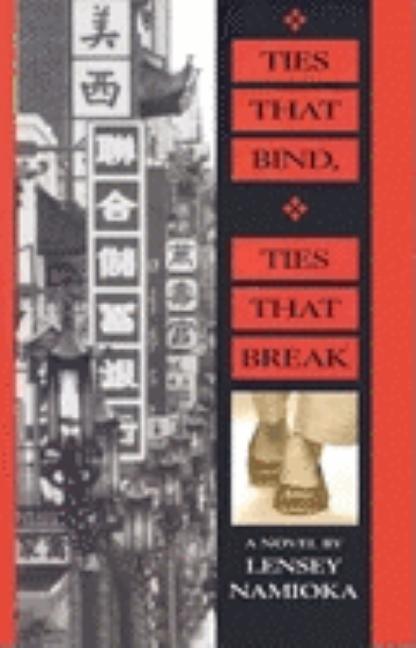Book Descriptions
for Ties That Bind, Ties That Break by Lensey Namioka
From Cooperative Children's Book Center (CCBC)
When Ailin's mother makes the decision to bind Ailin's feet, following the practice that is still typical in upperclass families in China in 1911, Ailin resists. Though she is not even five, she understands that footbinding will inhibit her mobility and freedom. She has seen her Second Sister's crippled feet and the grimace on the older girl's face when she recalls what it first felt like to have them bound. Against her mother's wishes, Ailin's father supports his daughter. " 'She's too young to understand the consequences,' said Mother. 'But I understand the consequences,' said Father." The consequences, as both readers and Ailin discover in this compelling novel of a spirited and courageous girl's difficult passage into young adulthood and adulthood, are potentially devastating: Ailin is no longer considered marriageable in the eyes of other upperclass Chinese families, and her own family will not support her either financially or emotionally. The idea of a young upperclass Chinese woman supporting herself in the early part of the 20th century is almost unheard of. But the same spirit that Ailin possessed at age five when she refused to have her feet bound sustains her as she comes of age and chooses a path that leads her first to a job as a nanny for an American family in China, and eventually to a new life in the United States. It is not the life of luxury and leisure that she might have known, but it is one that she has chosen with no regrets. Author Lensey Namioka provides a note on the tradition of footbinding to give readers context for understanding an individual's struggle with cultural tradition that beats at the heart of this novel. (Age 12 and older)
CCBC Choices 2000. © Cooperative Children's Book Center, Univ. of Wisconsin - Madison, 2000. Used with permission.
From the Publisher
Third Sister in the Tao family, Ailin has watched her two older sisters go through the painful process of having their feet bound. In China in 1911, all the women of good families follow this ancient tradition. But Ailin loves to run away from her governess and play games with her male cousins. Knowing she will never run again once her feet are bound, Ailin rebels and refuses to follow this torturous tradition.
As a result, however, the family of her intended husband breaks their marriage agreement. And as she enters adolescence, Ailin finds that her family is no longer willing to support her. Chinese society leaves few options for a single woman of good family, but with a bold conviction and an indomitable spirit, Ailin is determined to forge her own destiny. Her story is a tribute to all those women whose courage created new options for the generations who came after them.
As a result, however, the family of her intended husband breaks their marriage agreement. And as she enters adolescence, Ailin finds that her family is no longer willing to support her. Chinese society leaves few options for a single woman of good family, but with a bold conviction and an indomitable spirit, Ailin is determined to forge her own destiny. Her story is a tribute to all those women whose courage created new options for the generations who came after them.
Publisher description retrieved from Google Books.


